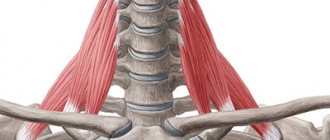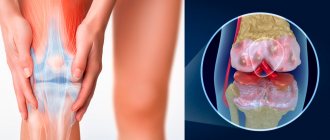Diogenes syndrome is considered a serious pathology that poses a danger to both the person himself and those around him. You may have seen on the news people cluttering their apartments with unnecessary things. They take home everything they can get their hands on, be it broken furniture or ordinary empty boxes. You definitely can’t be in their home. This is a clear example of unsanitary conditions. Why do people behave this way? Is it possible to somehow change the situation?
What is Diogenes syndrome
Diogenes syndrome - what is it? This is a mental disorder in which a person begins to show extreme disdain for himself and life in general. Otherwise called senile squalor syndrome. It is characterized by complete isolation from others, reluctance to do anything, and a tendency to accumulate unnecessary things and various rubbish.
The patient refuses hygiene procedures and home cleaning. Doesn't want to communicate with other people. And yet he does not understand what the problem is.
According to ICD-10, Diogenes syndrome is not considered a separate disease. This is due to the fact that it develops in many brain pathologies. In particular, this is a violation of cognitive functions and emotional-volitional status, which entailed personality changes. This also includes conditions such as, for example, senile dementia, schizophrenia, and the consequences of excessive consumption of alcoholic beverages.
Who is Diogenes
The philosopher Diogenes lived during the times of Ancient Greece. He led an ascetic lifestyle. His dwelling is an earthenware jug that stood in the center of Athens. There he slept and ate food. The latter, by the way, was considered by the Greeks to be a manifestation of extreme disregard for others.
According to many experts, calling pathological hoarding syndrome after a philosopher is incorrect. He, of course, was an ascetic, but he did not collect various rubbish. In addition, he was always ready to communicate with other people and even sought it out. That is why the disease is often associated with Plyushkin, the hero of N.V. Gogol’s poem “Dead Souls.”
“Frail patient” or senile asthenia syndrome
Senile asthenia (or “frailty” - frailty) is a term presented in the international classification of diseases as R54, combining about 85 different geriatric conditions and syndromes. However, most often it is:
- loss of body weight (sarcopenia) of at least 4.5 kg per year;
— decrease in hand strength according to dynamometry data;
- decrease in physical activity:
— slowing down the patient’s movement speed;
- severe general weakness and increased fatigue.
The combination of at least three or more of the above signs allows a patient to be diagnosed with SSA, and the presence of 1 or 2 symptoms indicates preasthenia.
The risk of developing senile asthenia syndrome (FAS) naturally increases in patients over 80 years of age, but according to the latest data, premature asthenia in patients aged 60-70 years cannot be ruled out.
There are predisposing risk factors in the genesis of SSA. These include age, gender (it is believed that senile asthenia is significantly more common in women), level of education (namely in people with lower education), marital status (asthenia is more common in divorced patients or widowers, in people who have never been married), socio-economic conditions (in Russia, 84% of the elderly population have SSA), urbanization (residents of rural areas are more susceptible to developing SSA).
Below is an algorithm for diagnosing SSA using the “age is not a barrier” system for all patients over 65 years of age and the advisability of consulting a geriatrician.
| Patient >= 60 years old → Screening according to the “Age is not a barrier” scale | ||
| Question | Answer | |
| 1 | Have you lost 5 kg or more in the last 6 months? (Weight) | Not really |
| 2 | Do you experience any limitations in your daily activities due to decreased vision or hearing? | Not really |
| 3 | Have you had a fall-related injury within the last year? | Not really |
| 4 | Have you been feeling depressed, sad or anxious in recent weeks? (Mood) | Not really |
| 5 | Have you had problems with memory, comprehension, orientation, or ability to plan? | Not really |
| 6 | Do you suffer from urinary incontinence? | Not really |
| 7 | Do you have difficulty moving around the house or outside? (Walk up to 100 m or climb 1 flight of stairs) | Not really |
| "Fragile" patients | "Pre-frail" patients | "Strong" patients |
| >= 3 positive answers | 1-2 positive answers | 0 positive answers |
| consultation with a geriatrician, conducting a comprehensive geriatric assessment, drawing up an individual patient management plan | It is advisable to consult a geriatrician |
Next, when frailty is detected, the frailty index is assessed, which is part of a comprehensive geriatric assessment performed by a geriatrician.
Assessment of the frailty index (AFI)
| ISA evaluation parameters | Point value | |
| 1 | self-assessment of an elderly and senile patient’s level of own health | 0 - very good; 0.25 - very good; 0.5 - average; 0.75 - bad; 1.0 point - very bad. |
| 2 | the presence, according to the patient, of at least one of the following diseases: arthrosis, history of stroke, ischemic heart disease, diabetes mellitus, COPD, bronchial asthma, anxiety-depressive syndrome, arterial hypertension, cataracts | 0—no disease; 1, 0 - diseases occur |
| 3 | assessment of the functional state (ability to sit without assistance, walk 100 meters; ability to get up from a chair independently; prolonged standing; independence in housekeeping; social activity; ability to stretch arms forward and hold them; ability to concentrate; walk for a long time; ability to wash independently , getting dressed, working; taking a bath, using the toilet, carrying objects, maintaining the emotional sphere) | 0—no problems; 0.25 - slight decrease in abilities; 0.5 - moderate decrease; 0.75 - pronounced decrease; 1, 0 - impossibility of independently performing the listed actions |
| 4 | body mass index | 0 — BMI >18.5; 1.0 — BMI < 18.5 |
| 5 | muscle strength during hand dynamometer test | 0—no weakness; 1, 0 — presence of weakness |
| 6 | ability to walk quickly | 0 points - saved; 1, 0 point - not saved |
The higher the senile asthenia index, the more the patient needs outside care:
0 - 0. 2 points - no signs of senile asthenia.
0.2 - 0.4 points - moderately pronounced signs of senile asthenia.
0.4 points and above - severe senile asthenia.
The first letters of the English term “senile asthenia” FRAILTY combine the following principles of prevention:
F (food intake maintenance) – implies control of food intake and regulation of diet;
R (resistance exercises) – physical activity;
A (atherosclerosis prevention) – prevention of the development of atherosclerosis;
I (isolation avoidance) – avoid social isolation;
L (limit pain) – relieve pain;
T (tai-chi or other balance exercises) – performing physical exercises;
Y (yearly functional checking) – regular medical examinations.
Thus, “fragile” patients with senile asthenia syndrome require special attention from doctors and medical personnel and an individual approach. It is important to remember this clinical condition when caring for elderly patients.
Donetskaya O. P.
Leushina K.V.
Symptoms of Diogenes syndrome
In addition to pathological hoarding, Diogenes syndrome is characterized by the following manifestations:
- ignoring hygiene rules;
- almost complete isolation from society;
- lack of shame;
- unwillingness to do anything;
- stinginess, greed;
- lack of self-criticism;
- aggression in response to criticism and remarks from outside.
In most cases, a person suffering from Diogenes syndrome lives in poverty. But this is not due to lack of money. Most often, they have savings that they keep either in a safe place at home or in a bank account. No one can touch them.
The patient takes home everything he finds in landfills. This could be cardboard, broken furniture, children's things and toys, and much more that he will never need. Sometimes things are replaced by stray animals. A person collects cats and dogs at home, which, naturally, he cannot properly care for.
Due to the large amount of trash or pets, there is an unpleasant smell in the apartment. But people don’t seem to feel it or don’t want to notice it. They will never get rid of their “wealth”. Moreover, they aggressively refuse to treat diseases caused by unsanitary conditions.
Most often, older people experience Diogenes syndrome. Those at risk are those who have been interested in collecting things for many years, for example, badges, coins or stamps. But recently the disease has become “younger”.
Symptoms
Diogenes syndrome, or pathological hoarding, is characterized by specific symptoms. The main symptom of the disorder is a passion for collecting. At the same time, patients collect various rubbish, sometimes even garbage, bringing it all home. As a result of such collecting, the living space turns into a dump, where there is often complete chaos and an extremely unpleasant smell. People are sure that sooner or later every thing will definitely come in handy, and sometimes they find different uses for different items that are not entirely adequate.
Patients with Diogenes syndrome show aggression towards others, in particular towards those who make comments about behavior or lifestyle, or want to remove or throw away collectibles. People with the disorder are not self-critical and do not admit that they have a problem.
Such patients completely neglect personal hygiene, they are very sloppy, do not take care of themselves, as a result of which they become like tramps. The patient’s relatives and neighbors suffer from this pathology. Due to misunderstanding on the part of others, a person tries to completely isolate himself, becomes withdrawn and shows absolute indifference to what is happening around him.
Patients do not feel a sense of shame and can undress in a public place or relieve themselves wherever necessary. They cannot give an adequate assessment of their behavior, but they treat themselves rather disdainfully.
People with Diogenes syndrome often exhibit excessive stinginess. At the same time, patients in most cases have fairly good savings. They try to save on everything - food, clothing, hygiene products and medicines. Sometimes patients with the disorder move to a landfill so as not to spend money on maintaining the apartment.
Stages of Diogenes syndrome
Experts distinguish 5 stages of development of this pathological condition:
- A person's home is constantly in chaos. But there aren't a lot of useless things there yet. At this stage, the patient’s behavior does not cause concern.
- Gradually, there is more garbage in the apartment or house, which the patient forgets to get rid of. An unpleasant odor and mold appear.
- There is more and more junk. It takes up all the free space. Sometimes it is difficult to walk from one room to another.
- It is simply impossible to stay in the home. Everything is dirty, covered in mold and emits an extremely unpleasant odor. It's hard to say when the place was last cleaned.
- It is no longer possible to live in an apartment. Even the walls and ceiling were damaged. The unpleasant smell begins to bother the neighbors.
The last stage poses a risk to the health and life of the patient. And that is not all. Those who live around may suffer. Unsanitary conditions increase the risk of reproduction not only of cockroaches, but also of mice, rats, and bedbugs.
In critical situations, you cannot do without the help of a psychiatrist.
Causes
The main reason for the development of Diogenes syndrome is disturbances in the functioning of the frontal lobe of the brain. This is where the center responsible for rational thinking is located. Factors that provoke problems are considered:
- various traumatic brain injuries;
- severe stress;
- excessive consumption of alcoholic beverages;
- taking drugs;
- age-related mental disorders;
- pathological tendency to accumulate trash.
Previously, stinginess or poverty for many years was considered another reason. But later scientists proved this statement wrong.
Plyushkin syndrome: causes
The mechanisms for the development of passion for pathological hoarding have not been fully studied, but doctors have identified a number of factors that can initiate the development of the disorder. The most common causes of compulsive behavior are the following circumstances.
- Features of the personal constitution. Most often, individuals with Plyushkin syndrome are overly stingy and calculating people. Their life credo is saving every penny. Such people have a fixation on the thought: in order to eventually get rich, you must save money all your life and use existing things to the hilt. Dyspozophobes are people who are unable to adapt and establish contacts in society. These are closed, emotionally repressed, uncommunicative people.
- Material disadvantage in personal history. Many patients have experienced significant financial difficulties in the past and experienced times of hardship and need. Even as the situation improves, people with Plyushkin syndrome continue to make abundant supplies, collecting things and accumulating food for “rainy days.”
- Serious life shocks. The disorder can be triggered by a psychotraumatic situation (read about psychological trauma) and personal drama: the death of a close relative, separation from a loved one, a serious illness of a spouse, one’s own health problems.
- Unfavorable heredity. At risk are people with a family history of obsessive-compulsive and anxiety-phobic disorders, bipolar depression, and various forms of psychopathy.
- Organic diseases of the central nervous system and brain. The presence of pathologies in the central nervous system, especially those caused by acute circulatory disorders, can initiate the development of pathological accumulation. Plyushkin syndrome can also develop after head trauma.
- Chronic alcoholism. Excessive consumption of alcoholic beverages leads to global changes in the structure of personality - its disintegration. Plyushkin syndrome in this case is one of the manifestations of degradation. (Read about alcoholism treatment).
- Senile dementia. Against the background of dementia, abnormal tendencies often appear, while pathological hoarding is one of the most common deviations in old age.
Diagnosis and treatment
As stated above, Diogenes syndrome is not an independent disease. This is a symptom of one of the mental disorders. They can be diagnosed using brain imaging, which will show damaged areas or tumors. A visit to a psychiatrist is also needed.
How to treat Diogenes syndrome? Difficulties may arise in this matter because the patient is not aware of the problem. So, family and friends must take responsibility for its decision. They are the ones who should pay attention to warning signs and ask a doctor for help.
Typically, nootropic drugs that normalize brain function, antipsychotics, and antidepressants are used to treat Diogenes syndrome. But this is not enough.
It is necessary to give the patient motivation to act. Tell him, for example, that his large “collection” needs to be organized, otherwise it will be unpleasant to look at. Gently lead him to the fact that he needs to observe the rules of hygiene both in relation to himself and in relation to his home. Tell the person that you would like to visit him more often, but you don’t even have a place to sit.
Never throw away things without his consent. This can provoke anger and aggression. It is better to surround the patient with care and love. Show that under any circumstances you remain a loving person.
If all else fails, the only way out is treatment in a psychiatric clinic. But remember that it requires either the consent of the patient himself or a court decision.
Operation Motivation
The need to clean the house can be motivated by the concern that the “collection” is kept in order (“otherwise it will be inconvenient to look at it”). It is important to convey to the person the idea that he needs to keep his room clean, even if victims of Diogenes syndrome have a unique concept of order. Psychiatrists advise appealing to the consciousness of patients by the fact that it is uncomfortable to be in their room and there is nowhere to sit, and that close people may not like it there.
It is also important to try to show interest in the “treasures” of your loved one and communicate with him at least once a week about his “hobbies”. And it is imperative to show how important and interesting this person and what he does to his family are. You need to remain a loving relative, ready to help, so that a person with such a problem can be confident in his future. Of course, this is not easy, especially since patients with Diogenes syndrome often strive for isolation, treat others with great prejudice, and sometimes are simply aggressive. But you need to try to establish contact with them. Moreover, such “home psychotherapy” often gives positive results.
If the disease has gone far, it is better to be treated in a psychiatric clinic. Although a patient can be placed there only with his consent or by declaring him incompetent, that is, by a court decision. And according to doctors, at least half of patients with this disease are quite healthy, and they do not require compulsory medical care. After all, such behavior is still regarded as a lifestyle.
Forecasts and preventive measures
The prognosis, unfortunately, is unfavorable. Treatment will improve the patient's condition, but not for long. After some time, the symptoms of Diogenes syndrome will return.
As for prevention, it is associated with increased mental activity. It is recommended to regularly devote time to reading, solving crosswords, and studying foreign languages. You also need to change your lifestyle by taking up, for example, sports. You should spend more time outdoors.
To prevent the syndrome in older people, you need to provide them with adequate nutrition, monitor their health, and control their weight. It is important to establish a sleep and rest schedule.
An example of senile squalor syndrome
Kurt Degerman lived in the Swedish city of Skellefteå. This man led a miserable existence for 3 decades. He lived in a landfill, ate what he found there. At the age of 60 he died. What is the interest of this case? It seems like nothing unusual, a homeless person, of which there are thousands.
Kurt had Diogenes syndrome. Around the age of thirty, he decided that he no longer wanted to spend money on stores. This concerned food and clothing. The man moved to the trash heap. All the money he earned from trading banks or begging, he spent on securities and precious metals. As a result, by the time of his death he had accumulated a considerable fortune. I just couldn’t use it anymore. Everything went to relatives. And they, by the way, claimed that Kurt was well versed in the financial topic.








